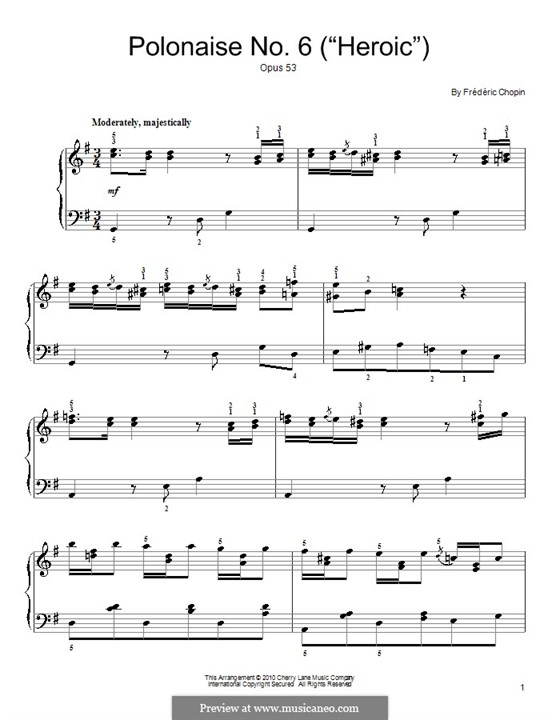Chopin Polonaise In A Flat Major
1843 publication The polonaise features many difficult technical aspects, including: • Fast ascending chromatic • Rapid, difficult scaling • with the weaker fingers • Quick • Fast • Broken chords • with wide fingering • Use of a wide range of the Structure [ ] The tempo of the piece is Alla polacca e ('like a and majestic'). The form may be viewed as intermediate between (A-B-A) and (A-B-A-C-A), since the first interlude is much shorter than the second (16 vs. The main is preceded by an of about thirty seconds in length. The piece features a grand introduction with fast ascending notes in both hands, setting the mood of the piece; also, it shows the heroic side of Chopin's art. The first theme is a dance-like theme in the of. It is the familiar part of the piece and has the left hand moving in pounding octaves. The theme is repeated up an octave with short that fill some of the auditory gaps in the theme.
The first interlude presents a series of chord progressions that lead into a recount of the traditional melody, with the polonaise rhythm employed in the left-hand. The main theme then repeats once more. The second, main interlude (or trio section) opens with six loud chords before switching to a very soft bass of descending octaves first in the key of and then in (written as ). Pon Di Edge Riddim Rar.
A -like melody follows the descending octaves and this occurs twice, and then a long lyrical interlude firstly with harmonic chord progressions and frequent. This ends in a descending passage before the main theme is replayed. The theme is played louder and more dramatically and ends in a including material derived from the main theme. A typical performance of the polonaise lasts seven minutes.

More Chopin Polonaise In A Flat Major videos.